Identifying Ecological Distribution Conflicts Around the Inter-regional Flow of Energy in Turkey: A Mapping Exercise
- Istanbul Policy Center, Sabanci University, Istanbul, Turkey
The consumption of more energy in Turkey is seen as a precondition for the economic and social development of the country in line with its comprehensive ideology of modernization and progress, and hence, a rather aggressive strategy in energy infrastructure investments is adopted since mid-2000s. Because of this aggressive strategy involving expropriation and enclosure of commons societal unrest against the electricity plants at local scale escalated even further, creating numerous local environmental justice conflicts all over the country. While electricity generation in Turkey is mostly carried out at the rural setting, electricity is consumed mostly in the urban setting, where both the household and industrial consumption levels are higher. A comparison of the regional distribution of electricity generation and consumption in Turkey shows that while the electricity generation capacity is concentrated in some cities—Izmir, Sakarya, Adana, Hatay, Zonguldak, Çanakkale, Muğla, and Samsun to name a few—it is mostly consumed in the urbanised centres of the country, more particularly in Istanbul, Kocaeli, Bursa, Ankara, and Izmir (the industrialised cities, considered as the engine of growth in the country). Hence, it would not be wrong to say that some cities such as Çanakkale and Zonguldak are designated as “ecological sacrifice zones” for the sake of national growth, illustrating well how Turkey prioritises economic growth (and thus industrialisation) over just ecological distribution. At this background, this paper focuses on the ecological distribution conflicts over electricity generation infrastructures and attempts to provide a mapping of the different electricity generation projects (in operation, under construction or planned) to better understand the urban-rural interplay over the electricity consumption and production. Hence, it attempts to shed light on the growing number of environmental conflicts for the last three decades, following the aggressive neo-liberal policies of modernisation and industrialisation.
Introduction: Ecological Distribution Conflicts
The size of global economic activity (measured as the global GDP) is getting unquestionably bigger since the industrial revolution, and it is accompanied by the level of material throughput. Today, with the increased size of societal metabolism, the human-induced pressure on natural systems mounts up as well. The fast growing need for the inflow of materials and energy triggers the need for extraction of materials, causing the so-called commodity frontiers to expand into new, previously untouched areas (Moore, 2000).
Looking at the problem on the global scale, it is obvious that not every country benefits equally from the globally accumulated wealth and that there is a distribution problem among societies. For instance, Bourguignon and Morrisson (2002) show that the income equality between countries deteriorated dramatically since the industrial revolution. Similarly, the resources and accumulated wealth within a society is not distributed evenly among its members either, which creates economic distribution conflicts between and within societies. However, neither the total accumulated wealth itself, nor the environmental problems created by the process of production of it are distributed evenly between and within societies. There is a distribution problem for the production resources and accumulated wealth, which always intrigued the early classical economists/philosophers such as Ricardo, Marx, and Engels. For instance, according to Ricardo, “the discovery of the laws that regulate distributive shares is the ‘principal problem in Political Economy”’ (in Kaldor, 1956, p. 83).
The globally accumulated wealth was not the only thing that was distributed unevenly after the industrial revolution. Other than that, there is a difference between the metabolic patterns of the developed and non-developed countries. In fact, if all the countries in the world used the same amount of material and energy necessary to consume and produce with the current metabolic pattern of the industrial countries, neither the total amount of resources in the planet, nor the absorption capacities of global ecosystem would suffice (Haas et al., 2015).
In the last century, the increasing global social metabolism has resulted in significant human pressure on the ecological systems, directly or indirectly aggravating global environmental problems. We observe large-scale deforestation, reduction of wilderness areas and biodiversity loss due to the expansion of biomass extraction, groundwater depletion, or contamination due to toxic outflows of the production systems (Krausmann et al., 2009). Similarly, climate change is one of the well-known results of the growing social metabolism of the world, caused primarily by the increasing consumption of fossil fuels to match the ever-growing energy demand of the increasing population.
Apart from the differences in the size of social metabolism, environmental problems are geographically and socially unevenly distributed as well, which in turn causes ecological distribution conflicts. As a result, there are local and global ecological distribution conflicts happening between the global North and global South (e.g., a British oil company operating in Nigeria), or at the local scale (e.g., a local construction company extracting gravel and stones for the construction of a highway by destroying the livelihoods of a nearby village; Martinez-Alier, 2002). Some other types of distribution conflicts could be listed as trans-boundary pollution such as acid rains, air pollution or climate change, environmental racism as seen in Warren County in USA in 1970s (Bullard, 1993), ecological unequal exchange (Hornborg, 1998), and intergenerational ecological debt (Azar and Holmberg, 1995).
The term ecological distribution conflicts (also called socio-environmental conflicts or environmental conflicts), first coined by Martinez-Alier and O'Connor (1996), refers to the “social, spatial, and temporal asymmetries or inequalities in the use by humans of environmental resources and services (whether traded or not), for example, in the depletion of natural resources (including loss of biodiversity), and in the burdens of pollution” (Martinez-Alier and O'Connor, 1999, p. 381). In fact, the emergence of this term was inspired by the similar concept from political economy, namely “economic distribution conflicts,” which studies the conflicts between the capitalists and workers, over the distribution of the value added of the production processes.
Overall, ecological distribution conflicts are encountered at different places in the world, for a variety of themes, and at multiple scales. While some are about the unequal distribution of the risks of dangerous waste others involve the extraction of metals and minerals at the expense of destroying the livelihoods of indigenous people; and some others are about privatisation of commons such as pasturelands. In many instances, conflicts arise not only due to unequal distribution of economic and ecological costs and benefits, but also due to lack of participation in decision-making and recognition of rights and identities (Schlosberg, 2007). Moreover, while some conflicts, such as climate change, are observed at global scale, some others are seen just at local scale, as in the case of building wind turbines near a small village. Hence, what we understand from the term “environmental justice” is now beyond the concept of unequal distribution of environmental risks and benefits, as it now encompasses a broad political and academic spectrum (Martinez-Alier et al., 2014). It is a multidimensional and multifaceted notion where the aspects of distribution, recognition, and participation are all interlinked and incorporated (Schlosberg, 2007, 2013), hence calling for an interdisciplinary or rather a transdisciplinary research methodology (Temper et al., 2015)
The broadening of the concept of environmental justice (EJ) is not only political or academic, but also spatial. A concept originating from a movement in United States has now expanded both horizontally, in the sense that it was followed by movements with similar EJ claims in different countries and locations in the world; and vertically, as there is now a globalising EJ movement acting together beyond borders, on issues such as climate change, trade agreements, and waste transfers (Schlosberg, 2013; Martinez-Alier, 2016). All around the world, people have been uniting to defend their lands, rivers, forests (in short, their livelihoods) against the activities, and projects such as mining, dams, tree plantations, landfills, and land grabbing (Martinez-Alier et al., 2016). Having similar concerns and claims, they reach beyond their close neighbourhoods by connecting with each other and forming global networks by jumping scale (Urkidi and Walter, 2011). As Agyeman (2014, p. 238) puts forward “[t]he global brand of environmental justice is growing by the day” and it is now “serving as a meeting point, a dialogue and forum for action-research among a growing network of activists, scholars, and non-governmental organizations” (Temper and Del Bene, 2016, p. 41).
As Moore (2011) points out, as much as countries, people, and companies are connected by the global circulation of goods and services and flows of capital, they are also closely connected through flows of waste and processes of uneven development, marginalisation, and injustices. Hence, a mine, a dam, or any other project igniting an environmental conflict is not an isolated site “in an unfortunate state of momentary geographic association,” but rather such projects “represent a set of connected sites through which value flows, which are mutually constituted by their relationships along far more vast chains of accumulation” (Robbins, 2014, p. 233). Therefore, creating a global map of such micro-political ecologies of injustices will result in “relinking of relationships broken by the powerful accumulative mediators of risk and vulnerability” by “carefully connecting the worldwide dots linking these apparently disparate cases” (Robbins, 2014, p. 234, 235).
In an attempt to develop the abovementioned global map which will offer an “analysis that can transcend individual cases and identify patterns, relationships between cases and actors' perspectives on how such conflicts are shaped by the larger political economy” (Temper et al., 2015, p. 261), the Global Atlas of Environmental Justice (EJAtlas) was launched in 2014. It is an online inventory of environmental conflicts all around the world, documenting environmental justice movements against particular economic activities on a map, aiming to make mobilisation more visible. It also highlights EJ claims and serves as a space for activists to receive information and connect with other activists working on similar issues (Temper et al., 2015). The map is the primary output of a large-scale research initiative called EJOLT1 (Environmental Justice Organisations, Liabilities, and Trade), aiming at improving the understanding of ecological distribution conflicts in the world, by conducting engaged research with the people struggling in those conflicts (Temper et al., 2015; Martinez-Alier et al., 2016).
The EJAtlas maps the worldwide ecological distribution conflicts through a bottom-up methodology, using data and knowledge co-produced by activists and academics (Martinez-Alier, 2016; Temper and Del Bene, 2016). It utilises previous mapping and data collecting initiatives about ecological conflicts and environmental justice movements. For instance, Fundaçao Oswaldo Cruz (FIOCRUZ) and Brazilian network of Environmental Justice had already created a map of environmental and health conflicts in Brazil (Porto et al., 2013). Similarly, the Centre of Documentation on Environmental Conflicts (CDCA) in Italy has been documenting symbolic ecological conflicts, both in Italy and in the world since 2007 and Latin American Observatory of Mining Conflicts (OCMAL) has collected and mapped data on mining conflicts in Latin America (Temper et al., 2015).
It is apparent that the activity of mapping is a critical tool for activists to present their collectively created knowledge and information in a systematic way. It helps them to inform the public and the media about the facts, and to force the policy makers to act in favour of EJ. The participatory nature of the mapping process is not only a methodological practice, but also a political necessity to create more legitimacy for the collected data, as the contributors are actual people and communities (Bryan, 2015). Furthermore, the participatory and bottom-up features of such maps make “visible many environmental injustices and instances of resistance that would remain hidden otherwise” (Martinez-Alier et al., 2016, p. 3).
The database divides conflicts into 10 main categories, around 50 sub-categories. Conflicts can be filtered according to category, commodity, EJ Success, project status, conflict intensity, companies, EJ Organisations, and around 100 other fields (Martinez-Alier et al., 2016) and hence provide valuable insights, especially for activists and academics. To date, many scholars made use of the atlas to better understand the nature and dynamics of the ecological distribution conflicts (see, for instance, Aydin et al., 2017, for network effects in EJ struggles; Temper et al., 2018, for EJ conflicts as driving forces of sustainability; Özkaynak et al., 2015b; Rodríguez-Labajos and Özkaynak, 2017 for EJ perceptions in mining conflicts; Pérez-Rincón et al., 2019 for ecological distribution conflicts in Andean countries).
Similar to the global pattern, Turkey has witnessed a growing number of environmental conflicts for the last three decades, following the aggressive neo-liberal policies of modernisation and industrialisation. Such policies were contested by the public at large through environmental mobilisations against mines, dams, thermal and nuclear power plants, and waste disposal. In an attempt to document these mobilisations, the Turkish Map of Environmental Justice was compiled, parallel to the compilation of the Global Environmental Justice Atlas.
This study will make use of the Turkish Map of Environmental Justice to lay out the current situation of the environmental distribution conflicts in the country, followed by a short account of environmental governance in Turkey. It will argue that the policy decisions regarding the electricity production are made in a non-transparent and top-down manner, excluding many local and national stakeholders, and such lack of participation and transparency causes a strong reaction from a rather active civil society at both national and local scales. To better understand the nature of these conflicts, a short summary of the energy related conflicts will be provided through mapping of the distribution of different electricity projects in Turkey, to open a pathway for discussing the cross-scale and inter-regional unequal exchange in Turkey.
A Mapping Exercise: The Turkish Map of Environmental Justice
The growth in material and energy flows of the economies and societies create important environmental impacts, igniting environmental justice movements against dams, thermal and nuclear energy plants, mines, industrial fishing, and waste disposal all around the world (Martinez-Alier, 2002). Similar to the global pattern, Turkey has witnessed a growing number of environmental conflicts since 1990s. The size of the economy more than doubled in the past two decades, urbanization level rose from 60 to 75% and the population increased by more than 30%. As a result, several important biodiversity hotspots of global significance in the country are under pressure of degradation and many endemic species face extinction due to the increasingly aggressive policies of modernisation and industrialisation of the country (Paker et al., 2013).
According to the environmental performance index published by the Yale University each year, in 2018, Turkey ranked 108th out of 180 countries with its overall score, 172nd in the biodiversity and habitat category, and 136th in the climate and energy category2 The adverse effects of the economic development in the country gave rise to complaints against current or potential impacts from natural resource extraction, land use change, energy production, and increased pollution, causing local communities at grassroots levels as well as national and international civil society organisations to be increasingly involved in environmental justice movements (Özkaynak et al., 2015a).
Over the years, the country witnessed many well-known environmental protests such as the Bergama movement against gold extraction (Çoban, 2004; Özen, 2009) or the movement in Gerze against a coal fired power plant (Akbulut, 2014; Arsel et al., 2015). More recently, there are mega-projects, which have been heavily contested by the civil society. These mega-projects include a third bridge over the Bosporus Strait, a third airport in Istanbul, and opening a huge canal to connect the Black and Marmara Seas, which will destroy Istanbul's last remaining forests, important water resources, agricultural areas, and bird migration routes (Gülersoy et al., 2014). There are other cases where local communities are fighting against activities such as dam construction and energy projects in protected areas, waiving the obligatory EIA Report for mega projects, allowing mining exploration in nature conservation areas, and weakening control mechanisms concerning the use of forest and coastal areas (Özkaynak et al., 2015a).
One of the emblematic and recent examples of the environmental justice movements in Turkey is the Gezi Park demonstrations, which took place in June 2013 and generated widespread interest and coverage both nationally and internationally. This emblematic protest took place “in a country where the environmentalist discourse is very much dominated by planting trees” (Özkaynak et al., 2015a, p. 105), against the bulldozers which were moving in to uproot the trees in the park (which is practically the only green space left in the area), in preparation of rebuilding the Ottoman Military Barracks which had been standing there more than half a century ago, before the park was built. The people in Istanbul did not need yet another shopping mall or a luxury hotel; instead, they wanted to preserve what was left from the last green space in the old and vibrant neighbourhood of Taksim. Indeed, claims of the Gezi Park protestors seemed straightforward and in line with the global environmental justice movement (Schlosberg, 2013).
In an attempt to document such environmental mobilisations around the country, the Turkish Map of Environmental Justice has been compiled as reported by local activists and scholars3, documenting more than 150 conflicts in eleven categories, as shown in the Figure 1. The compilation of these cases provides a basic, yet an important step toward informing public debate in Turkey over the environmental justice movements ignited due to the conflicts between development and environment. The map can serve as an important tool where, with the help of quantitative and qualitative data, environmental conflicts can be described, compared, and interpreted.
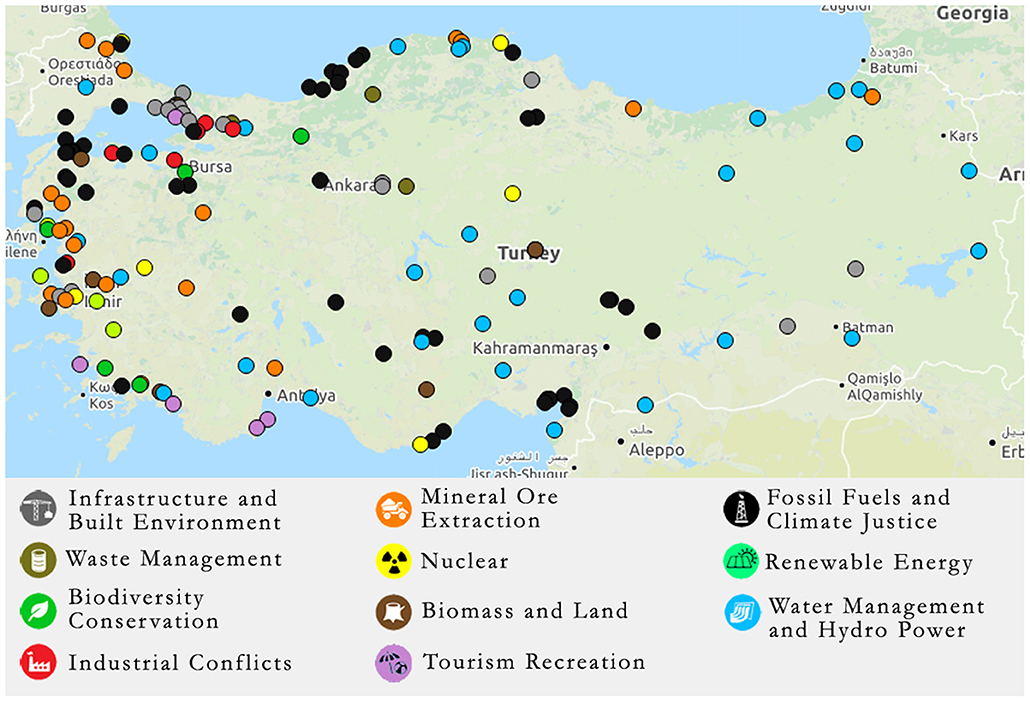
Figure 1. Map of Environmental Justice in Turkey (Özkaynak et al., 2015a).
Many of the reported conflicts on the map are in categories related to the production, consumption or transmission of energy, such as coal-fired power plants and hydropower plants. The highest number of reported cases is in the category of fossil fuel and climate justice conflicts, mainly documenting the movements against the coal and natural gas fired thermal power plants. Water management and hydropower category, which documents conflicts over the lakes and rivers, including large and small-scale hydro power plants comes next. Other two energy related categories are nuclear and renewable energy categories. In total, as of March 2017, 82 cases on the map have been reported to be related to energy production.
Indeed, it is possible to establish a link between the high number of energy related conflicts and the trends showing the level of extracted energy in Turkey's societal metabolism. As shown in Figure 2, the energy extracted from hydro and brown coal has been on a steady rise since 1950s. Especially in hydropower, there has been a sharp increase in the last decade (Özkaynak et al., 2014), in line with the country's recent energy policy of using all hydropower potential to generate electricity4 Similarly, in an attempt to reduce the dependence on imported energy, Turkey plans to exploit the brown coal (lignite) resources of the country, which in turn explains the high number of the reported fossil fuel conflicts against coal-powered plants under construction or at planning stage.
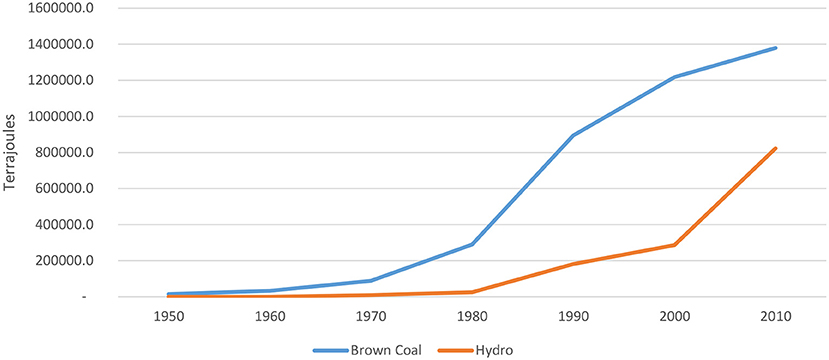
Figure 2. Extracted energy from hydro and brown coal between 1950 and 2010 (Özkaynak et al., 2014).
Such a mapping exercise of ecological conflicts can be seen as a novel form of creating knowledge by both activists and scientists, and such co-production is increasingly recognised as a pertinent method of informing scientific debate with policy implications (Martinez-Alier et al., 2016). More specifically, when accompanied by geographic information and data on flows of material and energy, it has the potential to offer understanding the root causes of environmental change and the surfacing of ecological distribution conflicts. However, in order to fully understand the dynamics of a conflict, there is a pressing need to further study the institutional context; in particular, the participation and recognition related aspects inherent in conflicts as well (Schlosberg, 2007). In this context, the following section will summarize the status of environmental governance in Turkey in the background, by shortly describing the current policy practices and key actors.
Environmental Governance in Turkey at a Glance: Policy, Practice, and Actors
Turkey has a rich record of legal texts (at both the constitution and law level) favouring the protection of the environment. The most notable example is perhaps Article 56 of the Constitution of 1982, where everyone's “right to live in a healthy and balanced environment” is recognized. According to Article 56, “It is the duty of the State and citizens to improve the natural environment, to protect the environmental health and to prevent environmental pollution”5 However, as Cerit Mazlum (2006) argues, although it seems promising to have a constitutional language for the protection of environment, the legal text in Turkey on environment does not usually translate well into practice when economic growth and development are at stake. In a similar vein, Adaman and Arsel (2005) argue that the legislative text on environment is well established whereas there are still significant environmental challenges due to insufficient implementation. Over the years, governments in Turkey, irrespective of their political stance, have supported development projects that created growth and jobs, at the expense of high environmental costs (Paker et al., 2013).
In order to understand the problem of implementation, it is useful to look at the historical development of the current implementing body, The Ministry of Environment and Urbanisation. The early steps toward a national environmental policy started in the late 1970s, at the aftermath of the United Nations Stockholm Environment and Human conference. As a first attempt to institutionalize environmental policymaking, the Undersecretariat of Environment, affiliated to the Prime Ministry, was established in 1978 (Adaman and Arsel, 2012). With increasing concerns over environmental problems and growing awareness in 1980s, the Under Secretariat was first transformed into the General Directorate of Environment in 1984 and then into Ministry of Environment in 1991 (Paker et al., 2013). In 2003, the Ministry of Environment merged with the Ministry of Forestry, forming the Ministry of Environment and Forestry. Not a decade later, in 2011, the ministries were restructured again and this time, the Ministry of Environment and Urbanisation was established, forging together the Ministry of Environment and Ministry of Public Works and Housing. Although at first it seems to be an insignificant detail, the history section of the Ministry website does not mention anything about the Ministry of the Environment, and only the history of the Ministry of Public Works and Housing is provided6 From this point, it can be deduced that the former Ministry of Public Works and Housing has only changed its name to include three general directorates form the old Ministry of Environment and Forestry (DG of Environmental Management, DG of Environmental Impact Assessment, Permit and Inspection, and DG of Protection of Natural Assets; Sahin, 2014). In this context, Sahin (2014) argues that the focus of the current Ministry is not environment but in fact just urbanism.
Meanwhile, in 2011, Ministry of Forestry was transformed into the Ministry of Forestry and Water Affairs, undertaking some responsibilities over the protection of environment, as well. This created several conflicts of authority between the two ministries7 In addition to these two ministries, the Ministry of Health, Ministry of Energy and Natural Resources, and the Ministry of Food, Agriculture, and Livestock also have responsibilities concerning the protection of environment (Adaman and Arsel, 2012). The abovementioned transformation of the institutions and agencies for environmental policy aptly illustrates why the Turkish state should not be seen as a monolithic body. The legislative, judicial, and executive constituents clash with one another as the state bureaucracy is organised as multiple and competing institutions and agencies (Akbulut, 2011; Adaman and Arsel, 2012). This conflict of authority and impermanence of the institutional structure is one of the reasons for the state's inability to implement environmental legislation. Indeed, the governance problem arising from the multiplicity of agencies is crystallised well in the climate change governance in Turkey, led and coordinated by the Ministry of Environment and Urbanisation (MoUE), which hosts Turkey's chief negotiator under UNFCCC. Along with the MoUE, other important actors regarding climate policy governance are as follows:
• Ministry of Energy and Natural Resources—the key actor for the energy and mitigation policies, usually having a defensive stance against the ambitious climate policy
• Ministry of Development—the key actor for the analysis of the economic impacts of the policies, also having a defensive stance
• Ministry of Forestry and Water Affairs—responsible for the adaptation policies and LULUCF
• Ministry of Food, Agriculture, and Livestock—working for both the adaptation and mitigation policies
• Ministry of Foreign Affairs—providing diplomatic support during international negotiations.
These ministries, together with the three major business associations TUSiAD, MUSİAD, and TOBB, constitute the “Climate Change and Air Management Coordination Board” and currently the civil society in Turkey has no representation in this board. It is important to note that the ministries have different stances against an ambitious climate policy, sometimes creating conflicts between the ministries themselves.
Adaman and Arsel (2012) argue that apart from the multiplicity of agencies, the incapability of the state to implement environmental legislation largely stems from the patronage-based reciprocity, sacrificing environmental protection at the expense of particular private interests. Although the state in Turkey is built on and operates in a top-down structure (Heper, 1991), the interaction between elites and the state is carried out mostly through corruption networks, bribery and patronage (Heper and Keyman, 1998; Adaman et al., 2009; Transparency International, 2016). Hence, so far, both the governments and the attached elites have found and created ingenious ways to circumvent existing legislation (Adaman and Arsel, 2012). Furthermore, as mentioned before, when a choice between industrialisation and environmental protection is on the table, state's tendency has almost always been to opt for industrialisation, regardless of the political stance of the government (Adaman and Arsel, 2012). The legal text does not translate well into practice due to the incapability of the institutional structure and the unwillingness of governments to enforce the legislation properly (Adaman and Arsel, 2012). As a result of this lack of commitment to environmental protection, such important procedures as environmental impact assessments are most of the time seen as formalities, sometimes resulting even in failure to implement definitive court decisions (Paker et al., 2013).
The period after 1980s onward, when the foundations of environmental legislations and institutions were first laid, also marks one of the most important periods in terms of the socioeconomic transformation of Turkey, given the ambitious liberalisation attempts of the Özal government just after the military rule between 1980 and 1983 (Adaman and Arsel, 2012). Turkey embarked on a path of neo-liberalization, a transformation that has been fostered by multilateral institutions such as the International Monetary Fund (IMF) and the World Bank (Harris and Işlar, 2013). With this transformation, the role of the state did not weaken, but has transformed from being the provider of public utilities and services to being the regulator of a private sector and business-friendly environment, where Özal took strong steps for integrating the Turkish economy with global capitalism (Adaman and Arsel, 2012; Harris and Işlar, 2013). This neoliberal turn also affected the environmental and resource use/access governance in the country through a wave of liberalisation and deregulation of many sectors, including the energy sector (Harris and Işlar, 2013). For instance, before 1980s, the investments on hydroelectricity production were characterised by the big public investments for the construction of large dams, with no participation from the private sector. However, after the neoliberal shift in the natural resource sector, the Turkish government, in an attempt to increase the capacity for electricity generation, started a large-scale project to promote small-scale hydroelectricity plants owned by the private sector, where “water usage rights” would be granted to companies for 49-year periods (Harris and Işlar, 2013).
Özal's aspiration to integrate the economy with global capitalism also resulted in a bid for full membership in the EU, which in turn had a great influence on the environmental legislation in Turkey (Adaman and Arsel, 2012). Since the environmental acquis contains several major legislations on water and air quality, waste management, nature conservation, industrial pollution control, noise, climate change, chemicals and GMOs, and horizontal legislation headings such as environmental impact assessment, and public access to environmental information, the alignment attempts brought into the country a large bulk of environmental legislation. As part of the approximation progress, Chapter 27 on environment was opened in 2009 and a large chunk of IPA (Instrument for Pre-Accession Assistance) funds (~15% of the total) was allocated to the alignment of the environmental legislation in the form of laws, regulations, and decrees. However, as mentioned earlier, the large bulk of environmental legislation did not translate fully into implementation. The 2016 Turkey Progress Report prepared by the European Commission points out the implementation problem as follows:
“Turkey is at some level of preparation in this chapter. In the past year, there was some progress, mainly in increasing capacity in waste management and wastewater treatment, whereas enforcement and implementation remains weak, especially on waste management and industrial pollution. (…) In the coming year, Turkey should (…) complete alignment with the directives on waste management, industrial pollution and water and ensure correct implementation of the environmental impact assessment legislation. ”8[Emphasis added].
The problem of implementation was not exceptional to the 2016 report, as it was again quoted in the progress report of 2015: “… whereas enforcement remains weak, especially on waste management and industrial pollution. (…) Poor implementation of court rulings on environmental issues is causing public concern”9 In 2014, the quote was “Turkey has made some progress in aligning legislation in the fields of environment and climate change, whereas enforcement remains weak”10
Overall, the EU accession process, in addition to its effects on the environmental legislation in Turkey, has enabled the civil society in Turkey to rise to prominence. This was partly due to the increased efforts for integration to the global economy. In fact, before 1980 military coup, there was already a vibrant civil society, which, however, did not have any transformative power over the state structure (Paker et al., 2013). The liberalisation period after the coup brought about the flourishing of the civil society, mobilizing for a wide range of issues such as gender, human rights, and environmental protection. Especially in 1990s, the number of environmental organisations increased (Adem, 2005), as environmental degradation and ecological issues became more apparent in the country's agenda (Paker et al., 2013).
Indeed, the development of the environmental movement in Turkey and the ways in which the environmental organizations can influence public policies are mainly determined by the political structure of the state. As Cerit Mazlum (2006) argues, the state in Turkey (regardless of the political stance of the governments) is passive-exclusive11, in the sense that the state acts selectively when taking into account the views of the civil society. Some requests can be considered negotiable, depending on the nature of the organisations, whereas other demands can be totally ignored if they create conflicts with other prioritized areas in policy-making.
Thus, in practice, the Turkish state adopts a rather arbitrary stance toward the civil society. If an environmental organisation does not contradict the developmentalist priorities of the state, it can find the state accessible on some cases (while inaccessible on other cases; Paker et al., 2013). Therefore, it would not be wrong to point out that, in Turkey, there is limited participation of the environmental organisations in the decision-making processes related to the environment (Cerit Mazlum, 2006). This type of selective cooperation was especially visible in the early 2000s, when Turkey's candidacy for the EU obliged the state to collaborate with the environmental organisations as a precondition for getting hold of the pre-accession funds (Kadirbeyoglu et al., 2017).
Despite the involvement of some environmental organisations in the decision-making and policy-making processes in Turkey, participation is often not effective (Adaman and Arsel, 2012; Kadirbeyoglu et al., 2017). There are cases where civil society organisations have sometimes participated in decision-making processes by becoming members of the commissions, by presenting their opinions and by contributing to the development of environmental legislation. However, more often than not, participation has been confined to “participation on paper,” with meetings organised as formalities, where policy proposals by the environmental organisation are ignored and are not reflected in final decisions and regulations (Paker et al., 2013). Furthermore, given the inability and reluctance of the state to protect the environment, the relations between the civil society and the state has become a rather conflicted terrain, where, even such matters as nature conservation, which is usually considered a relatively conflict-free subject in the global North, may become a controversial political topic in Turkey (Paker et al., 2013).
Against this background, an increasingly active and critical environmental civil society has emerged since mid-2000s, to address the deepening of environmental problems which rapidly rose in number and aggravated due to the aggressive growth strategies, particularly in the fields of the energy and infrastructure (Kadirbeyoglu et al., 2017). As mentioned in the previous section, these aggressive policies led to several local environmental conflicts against the construction of thermal and nuclear power plants, small scale hydropower projects, renewable energy projects, urban transformation policies, and mega infrastructure projects (Özkaynak et al., 2015a). And recently, the state's lack of commitment to environmental protection makes it a constant battleground for civil society actors (Paker et al., 2013). The next section will look closely into some recent ecological distribution conflicts resulting from aggressive energy policies, again by making use of the Turkish Map of Environmental Justice and other data sources.
Turkey's Energy Related Conflicts
Turkey's energy policies have been predominated by concerns over the security of supply, affordability of energy prices, and competitive power. These concerns entail a number of important challenges and responsibilities for the country, both in terms of energy and environmental policies, and particularly in terms of climate politics. With a population of more than 80 million and GDP of ~900 billion dollars, Turkey sees the consumption of more energy as a precondition for the economic and social development of the country in line with its comprehensive ideology of modernization and progress. Accordingly, there are two main trends that have shaped the energy strategy of Turkey: the rapid increase in the demand for energy and electricity (as presented in Figure 3), and country's dependence on imported fossil fuel, mainly natural gas, oil, and hard coal, leading to a significant deficit in its current account. Currently, around 74% of all energy consumed in the country is imported from abroad. The case for electricity production is similar to the distribution of primary energy supply. Turkey produces a notable bulk of its electricity from coal and natural gas a large share of which is imported into country. As a result, the strategic plans are made in accordance with scenarios projecting an increase in energy demand with increasing rates and matching this demand with domestic resources.
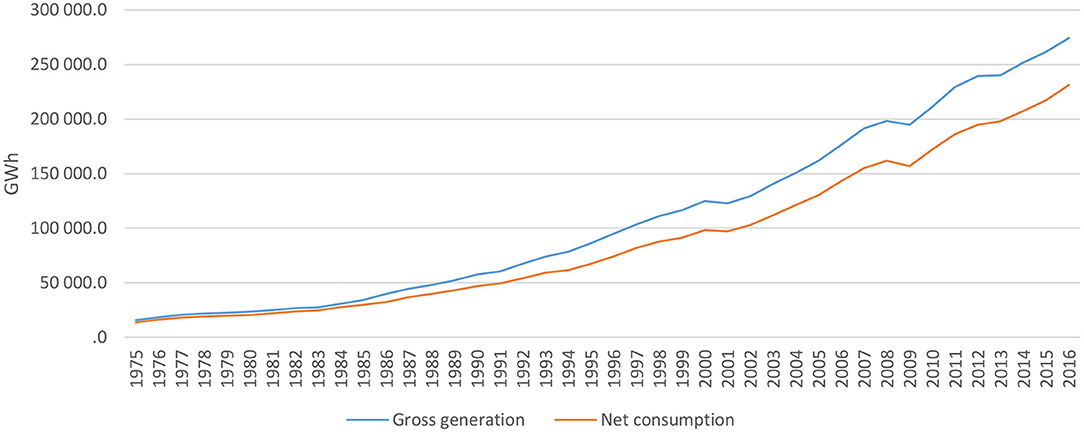
Figure 3. Trends in gross generation and net consumption of electricity in Turkey Source: TURKSTAT13.
As part of its development targets for the centennial of the country called “Vision 2023,” Turkey wants to enjoy a total installed capacity of 120,000 MW, by relying mostly on domestic potential, where fossil fuels (especially domestic lignite) will be an important contributor, together with nuclear, hydro, and renewables. As a matter of fact, the roots of the strategy above date back to the Energy Supply Security Strategy published by the Higher Planning Council Secretariat in 200912, at the aftermath of the 2007–2008 global economic crisis. In an attempt to reduce import dependence on energy resources (especially the hydrocarbons), which had a quite significant impact on the country's current account deficit, Turkey adopted a new coal exploration scheme and 2012 was declared as the “Year of Coal,” with newfound lignite reserves in different regions.
In an effort to boost electricity production, the government has embarked on a big privatisation journey by granting the usage right of the small rivers and coal mines to the private sector for a 49-year period so that private firms could build and operate hydro and coal power plants (Harris and Işlar, 2013). In fact, in an attempt to liberalise and deregulate the national energy sector, publicly owned power plants were rapidly privatised throughout the course of a decade, as shown in Figure 4, where the share of the privately owned installed capacity, once below the publicly owned capacity, constituted almost three quarters of the total capacity in 2015.
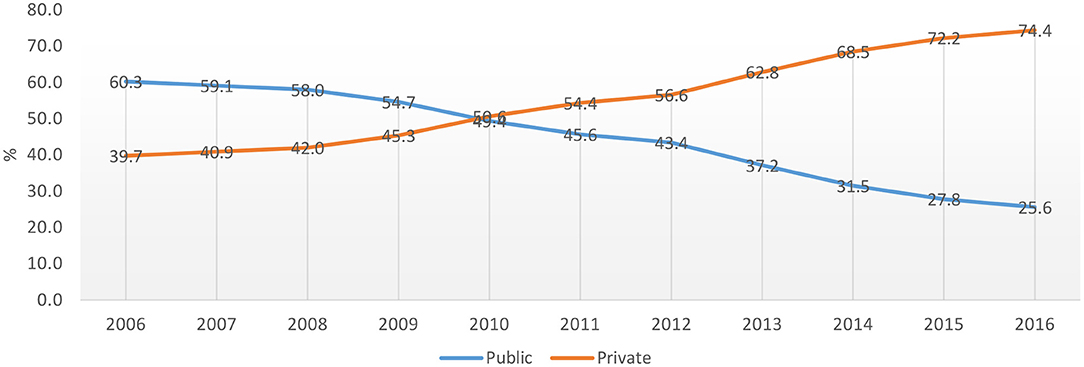
Figure 4. The distribution of Turkey's installed capacity by the public and private sectors (2005–2015) Source: TEIAŞ (Turkey Electricity Transmission Company)14.
In the case of hydro power, as Işlar (2012) and Harris and Işlar (2013) put forward, such a privatisation model involving the concession of the water rights to private sector generated tension between the private companies and rural communities who relied on the rivers for their livelihood needs. Especially in the northeast and southwest of the country, several small-scale hydro power plants were built on the same small creeks. Furthermore, strong policy tools such as exemption from environmental legislation, highly lucrative subsidy schemes, and treasury guarantees are provided especially for the coal investments. However, such coal investment projects have raised questions regarding profitability, considering the shift in the global outlook of the climate regime after the Paris Agreement, which aims to reduce greenhouse gas emissions substantially in the coming decades. For instance, an amendment to Energy Market Law in June 2016 delivered dispatch priority and a purchase guarantee for the electricity generated by power plants using domestic lignite, mainly aiming to keep power companies that have bought existing state-owned coal-fired power plants solvent and to convince private sector to invest in new lignite power plant projects (Çiftçi et al., 2016).
Another policy tool used by the government is a type of land acquisition in the form of “urgent expropriation” decisions, where private land, necessary for the construction of plants, transportation routes, and transmission lines, is expropriated through a ministerial cabinet decree (Işlar, 2012). Furthermore, legal reforms are established to facilitate the transfer of the user rights of the publicly owned land and property to the private entities involved in electricity generation or distribution (Işlar, 2012). For instance, with many amendments to the legislations such as “Renewable Energy Law” or “Law on Expropriation,” several environmental and social barriers to hydropower development were removed, accelerating the implementation of small scale hydropower projects (Scheumann et al., 2014). In many instances, such expropriations meant either the destruction of forests in favour of the transmission lines and transportation roads, or the loss of livelihoods of the rural communities living off the land owned privately or rented from the state, or off the commons such as pastures, ponds, or creeks.
Because of this aggressive strategy involving expropriation and enclosure of commons (coupled with the environmental governance problems such as top-down decision mechanism, lack of transparency, and lack of genuine participation, mentioned earlier in the previous section), societal unrest against the electricity plants at local scale escalated even further, creating numerous local environmental justice conflicts all over the country. The mobilisations against the electricity generations projects can be summarised under four subheadings, each described as follows:
Coal and Fossil Fuel Related Conflicts
As part of its target to reduce imported energy, described in the 2009 Energy Supply Security Strategy, coal-fired power plants running on domestic lignite were identified as one of the main tenets of country's energy policy. Consequently, as mentioned in the previous section, 2012 was declared “The Year of Coal” with a following wave of license applications for coal power projects. There are now many announced and planned power plants, on top of the ones already under construction and operating. Due to the problems of transparency and data availability, it is difficult to keep track of all projects on a daily basis, as several official and non-official sources present different and inconsistent figures and numbers. According to CAN Europe (2015), there are 75 projects on the pipeline, with an additional capacity of around 45 GW (which is much higher than the Vision 2023 targets), either in the pre-permit development phase, or announced. These projects, many of which may actually never be completed, are presented in Figure 5, together with the operating plants.
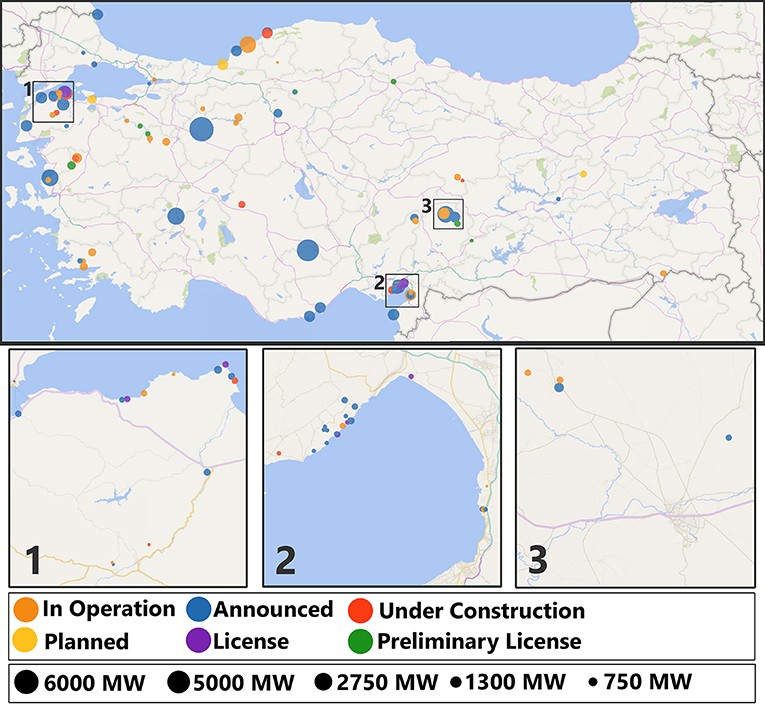
Figure 5. Planned and operating coal power plants in Turkey (Source: own elaboration, using data provided by TEMA Foundation15).
As stated in the Coal Sector Report of the Turkish Coal Enterprises in 2015 (TKI, 2016, p. 46), “the lignite reserves are largely low quality” and “the existing reserves do not have the proper characteristics for enrichment,” posing a problem for the profitability of domestic coal plants. Therefore, especially due to the import substitution strategy of the recent years, stronger and bigger incentive mechanisms were created for promoting domestic coal projects. However, these projects could still not attract investors' attention enough due to economic and technical inconveniences. Despite all the efforts, since 2009, only 2% of the new electricity production capacity connected to the grid has been generated by the domestic coal plants, while the same figure from the imported coal plants is seven times higher (Çiftçi et al., 2016). Therefore, it is not possible to conclude that such strategies resulted in a decrease in the import dependency of the country (Turhan, 2015).
Turkey's aim to develop a coal power plant capacity to produce electricity ignited several local environmental justice conflicts in many regions, regardless of whether the plant burns domestic lignite or imported hard coal. Some of these conflicts, where local people and/or national civil society fight together against these new constructions, is visualised on Figure 6, as reported in the Turkish Map of Environmental Justice as of August 2016:
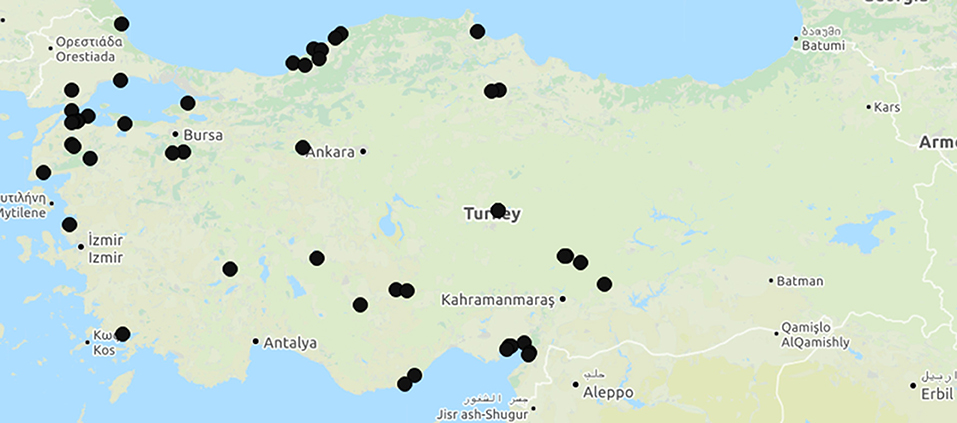
Figure 6. Environmental conflicts against the coal power plants, Turkish Map of Environmental Justice, March 2017.
While some of the struggles reported on the Figure 6 are against the plants in operation, many of them are against the planned and announced plants. There are several reasons why local communities and national civil society are mobilising against these projects. Many local and national health professionals are openly against these coal power plants due to the severe health impacts and respiratory diseases they cause (Pala, 2014). National and international NGOs mobilise primarily using arguments involving the CO2 emissions and the effect on the climate change (CAN Europe, 2015), because their tax money is used to subsidise heavily this soon-to-be-obsolete technology (Çiftçi et al., 2016), or because the coal mines would destroy the fertile agricultural land (Katisöz, 2015). Villagers in Ylrca, a small village in the Aegean region, are against these projects because around six thousands of their precious olive trees (on land rented from the state) were cut down overnight, by a coal power plant investor company (Turhan, 2015).
Hydropower Related Conflicts
As mentioned earlier, the national target of utilizing all of the hydro potential in the country led to the construction of many small-scale hydro power plants (HPP) on small rivers and creeks all over the country, and especially in the northeast and southwest of Turkey. In fact, Turkey relied heavily on hydropower for decades beginning from the late 1950s, where “State Hydraulic Works” was carrying out the constructions of rather big dams with large reservoirs, which were built with the aim of promoting technical and economic development in the country (Erensü et al., 2016). However, beginning with the late 1990s and early 2000s, following the neoliberal transformation that the country was going through, private investment for small HPPs was promoted (Işlar, 2012; Scheumann et al., 2014; Adaman et al., 2016). In order to attract private investment, a set of aggressive policy tools such as the transfer of water user rights to private companies for almost half a century (49 years), electricity purchase guarantee schemes, and exemption from the environmental legislation were implemented (Işlar, 2012; Harris and Işlar, 2013; Scheumann et al., 2014). As a result, a boom in the number of small scale HPPs was observed beginning from the second half of 2000s. An official number of the total HPP projects, however, is hard to get due to transparency problems, but several sources provide numbers between 1,500 and 2,000 (Adaman et al., 2016). According to General Directorate of Energy Works at MENR, there are 715 new hydropower plants units, taken into operation between 2003 and 2018, 669 of which has capacity below 50 MW. Figure 7 attempts to visualise these new HPP investments, where it is possible to see the high concentration of HPPs especially in the northeast and south of the country.
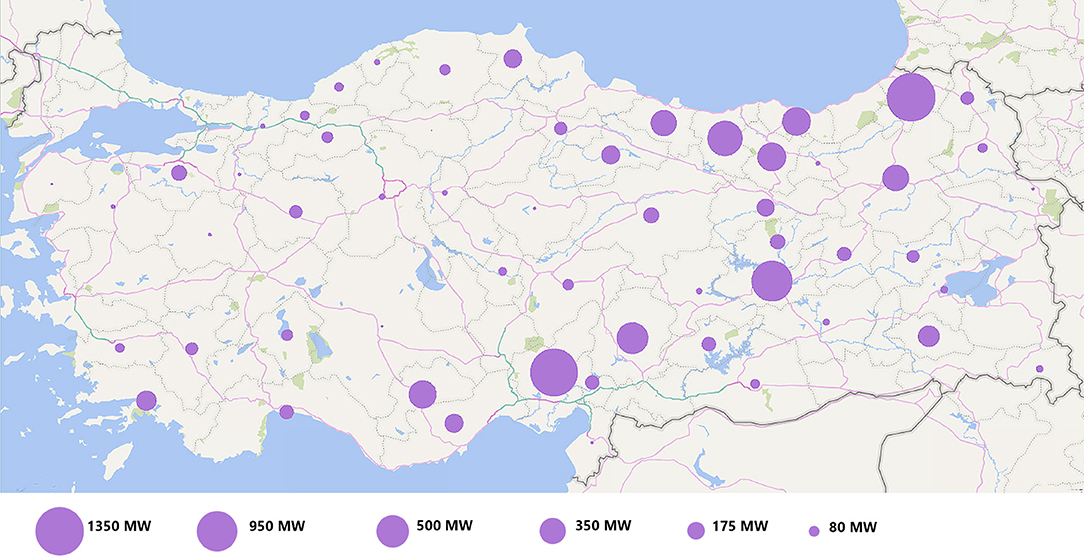
Figure 7. Distribution of the newly installed capacity of HPPs below 10 MW between 2003 and 2018, in the cities Source: Own elaboration using data from MENR17.
Many of these HPPs are run-of-river type plants, which are claimed to be more environmentally friendly than the reservoir type HPPs, allowing the investments to be framed as clean renewable energy and therefore making them eligible for international development finance (Işlar, 2012; Adaman et al., 2016). Thanks to this framing, Turkey was able to receive the first-ever loan from the Clean Technology Fund (CTF—a low interest loan scheme designed to fund developing countries' transitions to low-carbon economies) of the World Bank, amounting to USD 600 million (Işlar, 2012).
However, even though these projects were labelled as clean by the national and international investors, they nevertheless brought along severe environmental and social problems. In run-of-river projects, pipes are used for diverting the water from the riverbed from upstream into the generation facility at the downstream, thus affecting the fish migration routes by blocking the link between the downstream and upstream of the river and hence having severe impacts on the river ecosystem (Sekercioglu et al., 2011). Furthermore, as a form of water grabbing, the water diverted into pipes was no longer accessible to the nearby communities who depended on the rivers for small scale fisheries and subsistence farming (Işlar, 2012). As a result, local resistance movements appeared in many of such HPP projects, some of which are presented in Figure 8, as reported in the Turkish Map of Environmental Justice.
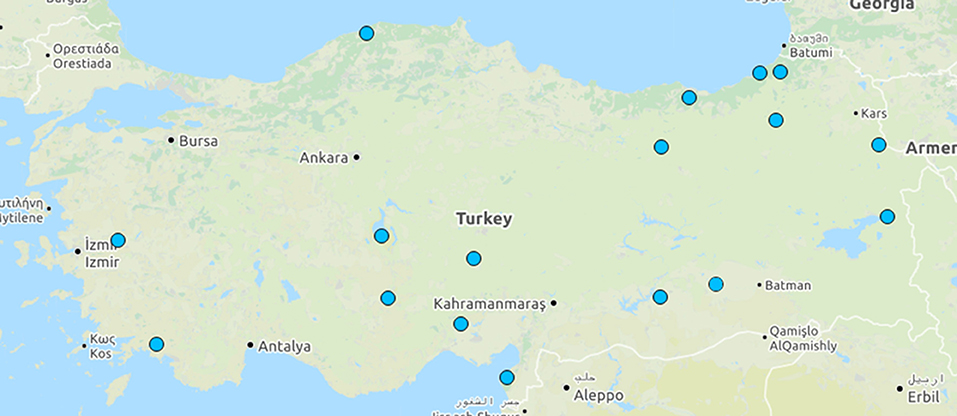
Figure 8. Environmental conflicts against the HPPs, Turkish Map of Environmental Justice, March 2017.
Renewable Energy Related Conflicts
Despite Turkey's appetite for domestic coal and hydro, the renewable energy investments have also had a notable share in the newly installed capacity in the recent years. For instance, in 2015, new wind instalments alone constituted 19.38% of the total new instalments of 4,287 MW (Figure 9A). Together with the solar, geothermal, and biomass, the total share of newly installed renewables accounted for 25.64%, surpassing the share of newly installed thermal (i.e., coal and natural gas). Similarly, in 2016, the total share of newly installed renewable capacity was 26.76% of the 5,898 MW of total new capacity (Figure 9B).
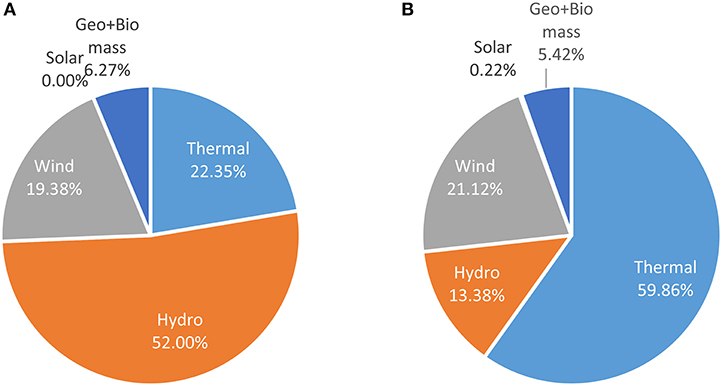
Figure 9. Newly installed electricity generation capacity (A) in 2015, (B) 2016 Source: MENR18.
These figures clearly show that Turkey's ambitious electricity production goals also apply for renewable energy, and it is not without conflicts either. Despite being labelled as climate friendly and clean, renewables too have been subject to environmental justice conflicts in Turkey. Four of these conflicts (three against wind farms, one against geothermal) are presented in Figure 10, as reported in the Turkish Map of Environmental Justice.
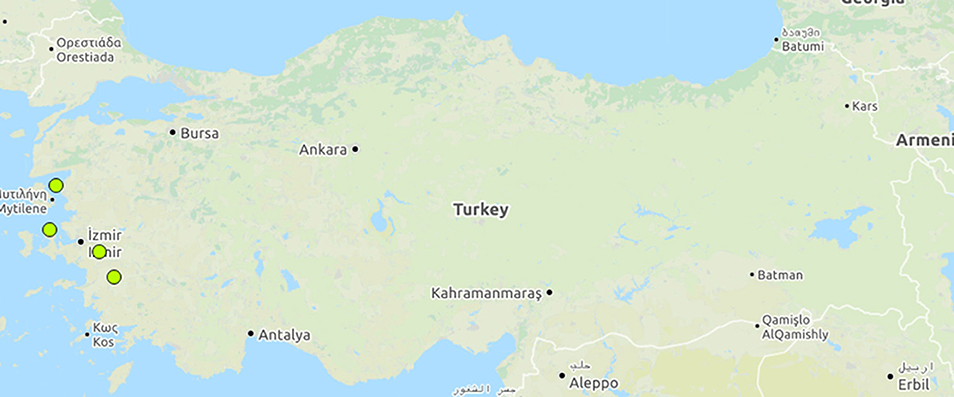
Figure 10. Environmental conflicts against renewables, Turkish Map of Environmental Justice, March 2017.
One of the most emblematic conflicts against the renewable energy is the mobilisation of the local communities in Karaburun Peninsula in Izmir, since around 2009. Locals in the Peninsula mobilised against a wind farm project with a capacity of 120 MW, which involved the removal of around 2,000 olive trees from a zone designated officially as an olive grove by the period's Ministry of Food, Agriculture, and Livestock (MFAL)16 Locals protested heavily since the construction of the wind turbines, roads, and transmission lines destroyed a great area of olive groves (partly on publicly owned land) and of already scarce pasturelands, affecting the livelihoods of the nearby villagers (Altiok Akatli, 2015), creating an ecological distribution problem.
However, apart from the mal-distribution of the environmental impacts, the local communities also raise issues of recognition and genuine participation. The process of “informing the public” meeting, which is part of the environmental impact assessment report, was protested and criticised by the local community, as follows:
It is clear that this “informing the public” meeting, which is planned to last only about an hour, about a project that will directly affect the rich nature and human life here, is nothing but an attempt to cover up the plunder over the nature and a formality for completing the necessary paperwork (Karaburun Kent Konseyi, 2013).
In fact, such conflicts against even renewable energy illustrates well how the top-down decision making mechanisms in Turkey, where (as mentioned in previous section) regulations such as environmental impact assessment are seen as formalities, are a source of conflict in and of themselves, especially when coupled with the neoliberal policies such as land expropriation and privatisation.
Nuclear Energy Related Conflicts
Turkey's “Vision 2023” energy strategy also involves the construction of three nuclear power plants (NPPs) in different regions of the country, namely in Akkuyu, Sinop, and İğneada. In fact, the interest in nuclear power is not new, as Turkey has had rudimentary plans to build a nuclear plant for almost six decades now. The primary argument in favour of the construction of the NPPs is that the country needs nuclear energy for its economic growth, and more importantly, the plants mark a milestone in Turkey's modernisation aspirations and they are seen as a source of high prestige. However, national and local opposition has also been there from the beginning, as old as the initial plans. Having experienced the catastrophic effects of the Chernobyl disaster, Turkey has a very active anti-nuclear movement.
Although Turkey does not have an operating nuclear power plant yet, it already has a waste disposal conflict in Gaziemir in the Aegean region, and two uranium mining conflicts, one in Yozgat (in Mid-Anatolia) and the other in Manisa, again in Aegean region. These conflicts, along with the three nuclear power plants, are presented in Figure 11, as reported in the Turkish Map of Environmental Justice.
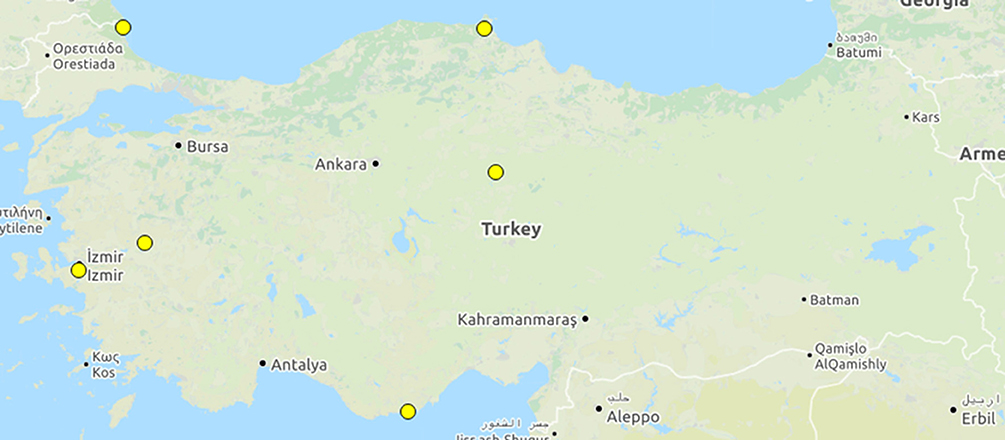
Figure 11. Environmental conflicts against nuclear energy, Turkish Map of Environmental Justice, March 2017.
Since construction of a nuclear power plant is not an easy task due to the large scale of the operation and requirement of high-level technical knowledge, the attempts for finding a private company to build and operate the plant failed several times. Turkish governments attempted to find an international investor at least four times and organised open tenders, which failed due to different economic, political and legal reasons (Sahin, 2011). For instance, the last tender in 2009 had only one bid from Rosatom (from Russia) despite all the efforts to invite other nuclear giants in the world (Aydin, 2014).
After recognising that neo-liberal methods would not work in the case of nuclear plants, the Turkish government took an opposite route, in 2010, after the last failed attempt. Two inter-governmental agreements were signed for Akkuyu (in 2010) and Sinop (in 2013), with Russia and Japan, respectively. These agreements, immune to national legislative procedures, were made through the most non-transparent and non-participative fashion, excluding all local and national stakeholders (Aydin, 2014).
Identifying Cross Scale and Inter-regional Interactions in Turkey's Energy Related Conflicts
“Yes, it is true that wind turbines produce renewable and clean energy. But, is it fair to make the people of the peninsula and species of the region, that is, the nature and the life itself, pay for the toll of the reduction of carbon dioxide/greenhouse emissions?” (Karaburun Kent Konseyi, 2013)
The quote above, from a press release by Karaburun City Council, against the wind farm project illustrates well how the “local,” “national,” and “global” scales are interconnected. It goes to show how a national action to achieve a global goal (aiming to prevent climate change, which is a global ecological distribution problem) may affect local processes and create yet another ecological distribution problem. Hence, investigating the linkages between the scales where the decisions are made and actions are taken or where effects are felt might be useful in understanding the dynamics of the ecological conflicts illustrated above. Of course, such examples of conflicts stemming from cross-scale interactions are not limited to the energy related conflicts, and many other examples can be found; however, this section focuses on the energy conflicts in particular.
In the case of Turkey, the ambition for national economic growth forms the basis of its aggressive energy policy that relies on several electricity generation projects that create environmental and social problems at local scale. Yet, the national ambition for the development of domestic coal fired power plants aggravates the problem of climate change at global level, and negatively affects the country's participation in the international climate policy (Turhan et al., 2016).
In Turkey, energy policy is shaped in the national development plans (designed by the central government), which are then reflected onto the environmental and spatial plans that are hierarchical in their implementation (i.e., local plans should conform to national plans). The final reflection of the national policy is seen in the regional distribution of the particular projects. In order to understand the relationship between the national and local scales, it is useful to examine the spatial distribution of the energy projects and related ecological distribution conflicts. Figure 12 exhibits the distribution of energy related conflicts in Turkey according to the population type, as reported in Turkish Map of Environmental Justice. It is seen that, the majority of the energy related conflicts (58%) takes place in the rural settings, inhabited by local communities. These local communities are the ones that are most affected by the negative environmental impacts of electricity generation projects—outcomes of an energy policy decided at the national scale.
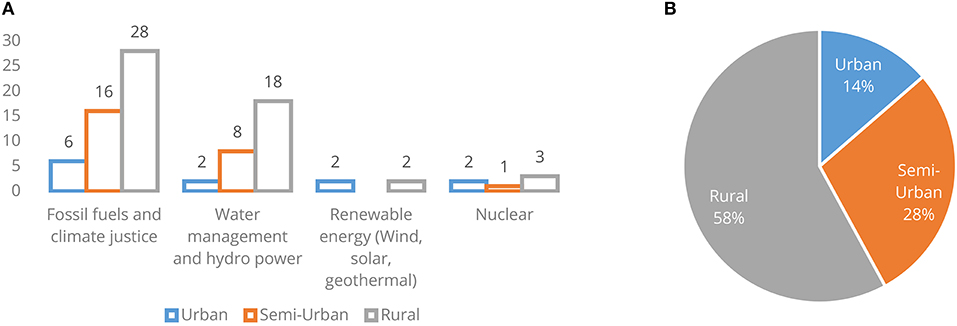
Figure 12. Distribution of energy related conflicts in Turkey according to the population type (A) by the category of conflict, (B) total energy related conflicts. Source: Turkish Map of Environmental Justice, August 2016.
Moreover, while electricity generation in Turkey is mostly carried out at the rural setting, electricity is consumed mostly in the urban setting, where both the household and industrial consumption levels are higher. This pattern can be spotted by comparing the regional distribution of electricity generation and consumption in Turkey. Figures 13A,B compare the cities in Turkey in terms of the total electricity produced, as opposed to the total electricity consumed in that city, respectively. It is possible to see that while electricity generation capacity is concentrated in some cities—Izmir, Adana, Zonguldak, Samsun to name a few—and the produced electricity is mostly consumed in the urbanised and industrialised cities of the country, more particularly in Istanbul and its surroundings, Ankara, and Izmir.
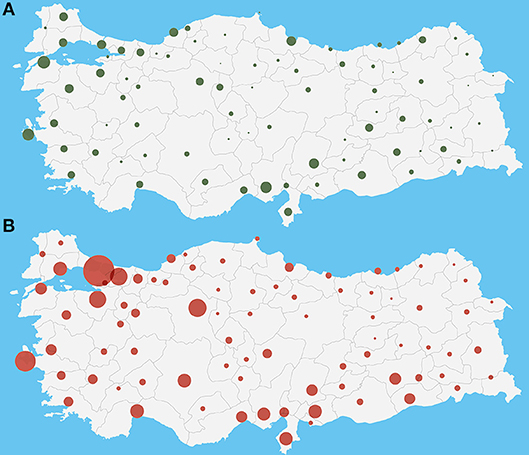
Figure 13. (A) Distribution of electricity generation in cities in 2016 (GWh) Source: Own elaboration using data from Enerji Atlasi (B)19 Distribution of electricity consumption in cities in 2015 (GWh) Source: Own elaboration using data from TURKSTAT20.
In support of the above figures, Figure 14 presents in more detail top ten cities with the highest electricity generation levels and the other top ten cities with the highest electricity consumption levels. As can be seen, the total electricity consumption in Istanbul is more than two-fold of its closest follower, Izmir. In addition, except Izmir and Hatay, none of the top consumer cities (which are the bigger urban and industrial centres) is in the top ten of the producer cities (which are mostly known for agricultural production and/or tourism). In fact, Figures 13, 14 illustrate well how Turkey prioritises economic growth (and thus industrialisation) over ecological distribution.
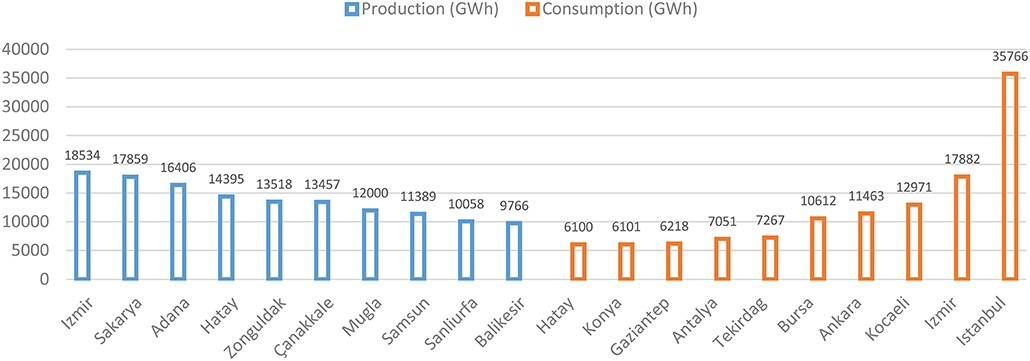
Figure 14. Top ten cities in Turkey producing and consuming electricity Source: TURKSTAT21.
Discussion
For Turkey, higher energy consumption is considered to be a necessity for the economic and social development, and inarguably for the overarching goal of modernisation, which in turn is equated with industrialisation and urbanisation (Arsel et al., 2015), manifested in the image of İstanbul. At this point, it is important to understand the crucial role that Istanbul plays in the modernisation journey of the country. As Akpinar and Paker Kahvecioglu (2007) point out, Istanbul is both the actor and the stage for the transformation of the country's integration into the globalised world and hence Turkey's national identity and image of modernisation and industrialisation is embodied in the city. In order to satisfy the high electricity demand from Istanbul, a megapolis considered to be a global city by many (Akpinar and Paker Kahvecioglu, 2007), the central government has made substantial efforts to build new and larger power plants. Especially the cities near Istanbul, such as Çanakkale and Zonguldak are already home to many coal fired power plants, with many others on the pipeline, as shown in Figure 15. In Çanakkale, for instance, four coal power plants are already in operation (total capacity of 3,125 MW), two power plants are under construction (total capacity of 1,650 MW), and twelve power plants are either planned or announced (total expected capacity of 14,885 MW).

Figure 15. The coal power plants in (A) Çanakkale and (B) Zonguldak and surroundings (Source: own elaboration, using data provided by TEMA Foundation).
The electricity generated in these cities is easier to transmit to Istanbul, Kocaeli, Tekirdağ, or Bursa, that is, the industrialised centres. Considering that the industry and services sectors based in Istanbul and nearby cities are the engine of growth in the country, it would not be wrong to say that some cities such as Çanakkale and Zonguldak are designated as “ecological sacrifice zones” for the sake of national growth. These cities share the same fate with other cities, such as Adana (1,650 MW in operation,13,200 MW on the pipeline) and Kahramanmaraş (2,795 MW in operation, 5,800 MW on the pipeline). Even though many of the planned and announced projects on the pipeline will never materialise, the rumours alone are enough to create discontent among the local communities.
The ambition of the country toward a complete exploitation of the domestic coal resources has a significant impact on the trends of greenhouse gas emissions, too. The greenhouse gas emissions trajectory of Turkey has had a rather consistent rise since 1990s, reaching 496.1 MtCO2eq in 2016. In this period, emissions related to the energy sector always had the greatest share and was the primary driver of the total emissions, while the emissions from the industry, agriculture, and waste sectors were rather stable compared to energy sector. In 2016, the energy sector was responsible for the 73% of the total emissions. The appetite for the economic and social development has also influenced the international climate policy of Turkey. As Turhan et al. (2016) put forward, Turkey is a laggard country in the global effort of mitigating climate change and resorts to a rather defensive stance due to the clash between environmental protection and economic development, which caused a significant delay on the way of it becoming a party to the UNFCCC (United Nations Framework Convention on Climate Change).
Turkey's foot dragging and reservations about the international climate policy are the result of its objective of catching up with the West (and hence being in the same league with the western countries, as exemplified by Turkey's membership in OECD), resulting in a prioritisation of economic growth (Turhan et al., 2016). On its path to development, concerns about environment and climate change were seen as obstacles and were mostly neglected when they clashed with economic priorities (Turhan et al., 2016). As Erdi Lelandais (2015) states, Turkey's so-called commitment to environmental and climate policy was there only as a matter of raising the country's prestige at the international arena. Turkey's (in) ambition for contributing to the international efforts for abating the impacts of climate change is clearly displayed in the country's commitment to the expansion of the coal-fired power plant fleet. There is clearly a conflict of interest between the global goal of combatting climate change and Turkey's targeted national economic growth. National goals are prioritised once again, this time having an adverse environmental impact at global scale.
Conclusion
The simple mapping exercise provided in this paper, in the first instance, illustrates the unequal ecological exchange between different regions (urban vs. rural) in Turkey. While the electricity is produced (and the negative impacts are felt) mostly in the rural areas of the country, the electricity is consumed in the industrialised urban regions, particularly in Istanbul and Marmara Region. As a result, it is able to show that there is an incompatibility between the national priorities and local priorities. It is clear that, in the sake of economic growth and development many rural areas are designated as ecological sacrifices zones.
Turkey does not only prioritise national objectives are local objective, but also over global ones, particularly when energy policy is concerned. From national to local scales, national priorities, coupled with the neoliberal policy practices, hierarchical implementation mechanisms of the spatial plans, and the top-down decision-making tradition, create a substantial number of conflicts against coal power plants, hydropower developments, and even against renewable energy projects. Meanwhile, from national to global, national priorities prevent the country from partaking a bigger and more substantial role in the international climate policy and impair the global effort to mitigate the negative impacts of climate change. As a result, the environmental governance mechanisms and energy and climate policy of Turkey has significantly thwarted environmental and climate justice, both at local and global scales.
Author Contributions
CA conducted the research, literature review, data compilation, writing, and figures.
Funding
The author gratefully acknowledges the financial supports of the EJOLT (Environmental Justice Organizations, Liabilities, and Trade) project, carried out under the 7th Framework Program of the European Union, between 2012 and 2015; Grant Agreement No. 266642; and ACKnowl-EJ (Academic-Activist Co-Produced Knowledge for Environmental Justice) [TKN150317115354] under the Transformations to Sustainability (T2S) Programme coordinated by the International Social Science Council (ISSC) and funded by the Swedish International Development Cooperation Agency (Sida).
Conflict of Interest Statement
The author declares that the research was conducted in the absence of any commercial or financial relationships that could be construed as a potential conflict of interest.
Footnotes
1. ^The EJOLT project (Environmental Justice Organizations, Liabilities and Trade, www.ejolt.org) is an EU FP7 Science in Society project that ran from 2011 to 2015, bringing together a consortium of 23 academic and civil society organizations across a range of fields to promote collaboration and mutual learning among stakeholders who research or use Sustainability Sciences, particularly on aspects of Ecological Distribution.
2. ^Detailed information about Turkey's performance can be found at https://epi.envirocenter.yale.edu/epi-country-report/TUR [Accessed 28.06.2018].
3. ^The map was online on www.cevreadaleti.org [Accessed 05.03.2017] between 2013 and 2017, and unfortunately it can no longer be accessed on this domain.
4. ^http://www.mfa.gov.tr/speech-entitled-_vision-2023_-turkey_s-foreign-policy-objectives__-delivered-by-h_e_-ahmet-davutoglu_-minister-of-foreign-af.en.mfa accessed: 16.05.2014.
5. ^Constitution of the Republic of Turkey, Article 56, https://global.tbmm.gov.tr/docs/constitution_en.pdf [Accessed 08.03.2017].
6. ^See MoEU web site: http://www.csb.gov.tr/turkce/index.php?Sayfa=sayfa&Tur=webmenu&Id=15 [Accessed 08.03.2017].
7. ^See Official Gazette dated July 4, 2011 and numbered 27984, “Decree Law No. 644 on the Organization and Duties of the Ministry of Environment and Urbanism” and “Decree Law No. 645 on the Organization and Duties of the Ministry of Forestry and Water Affairs”.
8. ^European Commission 2016 Turkey Report, p.86, https://ec.europa.eu/neighbourhood-enlargement/sites/near/files/pdf/key_documents/2016/20161109_report_turkey.pdf [Accessed 08.03.2017].
9. ^European Commission 2015 Turkey Report, p.76, https://ec.europa.eu/neighbourhood-enlargement/sites/near/files/pdf/key_documents/2015/20151110_report_turkey.pdf [Accessed 08.03.2017].
10. ^European Commission 2014 Turkey Report, p.71, https://ec.europa.eu/neighbourhood-enlargement/sites/near/files/pdf/key_documents/2014/20141008-turkey-progress-report_en.pdf [Accessed 08.03.2017].
11. ^As (Dryzek et al., 2003) put forward, a state can be inclusive or exclusive in terms of their attitudes towards letting non-governmental bodies (specifically civil society) to access decision making mechanism. They can apply this inclusion of exclusion either actively or passively. Passive in the sense that state does not hinder the social organisation, whereas does not support its development.
12. ^Higher Planning Council Secretariat (2009) Energy Supply Security Strategy. Available: http://www.enerji.gov.tr/File/?path=ROOT%2F1%2FDocuments%2FBelge%2FArz_Guvenligi_Strateji_Belgesi.pdf [Accessed 09.03.2017].
13. ^TURKSTAT, Turkish Statistical Institute, Power Installed of Power Plants, Gross Generation and Net Consumption of Electricity, http://www.turkstat.gov.tr/PreTablo.do?alt_id=1029 [Accessed 13.03.2017].
14. ^TEIAŞ (Turkey Electricity Transmission Company), Electricity Generation and Transmission Statistics Of Turkey http://www.teias.gov.tr/T%C3%BCrkiyeElektrik%C4%B0statistikleri/istatistik2015/istatistik2015.htm [Accessed 09.03.2017].
15. ^Personal communication with TEMA The Turkish Foundation for Combating Soil Erosion, For Reforestation and the Protection of Natural Habitats on 10 March 2017.
16. ^The Ministry of Food, Agriculture and Livestock has merged with the Ministry of Forestry and Water Affairs in 2018, forming the new Ministry of Agriculture and Forestry.
17. ^Enerji ve Tabi Kaynaklar Bakanliği, Enerji İşleri Genel Müdürlüğü, (Ministry of Energy and Natural Resources, General Directorate of Energy Works), http://www.eigm.gov.tr/tr-TR/Sayfalar/Enerji-Yatirimlari, [accessed on 25.05.2018].
18. ^Ministry of Energy and Natural Resources, http://www.enerji.gov.tr/tr-TR/EIGM-Raporlari [Accessed 15.03.2017].
19. ^Installed capacities and electricity generation statistics of the cities (Şehirlerin Elektrik Santrali Kurulu Güçleri ile Üretim ve Tüketim Bilgileri) Enerji Atlasi (Energy Atlas) http://www.enerjiatlasi.com/sehir/ [Accessed 09.03.2017].
20. ^TURKSTAT, Turkish Statistical Institute, Regional Statistics, Energy https://biruni.tuik.gov.tr/bolgeselistatistik/anaSayfa.do?dil=en [Accessed 09.03.2017].
21. ^TURKSTAT, Turkish Statistical Institute, Regional Statistics, Energy https://biruni.tuik.gov.tr/bolgeselistatistik/anaSayfa.do?dil=en [Accessed 09.03.2017].
References
Adaman, F., Akbulut, B., and Arsel, M. (2016). “Türkiye'de kalkinmaciligi yeniden okumak: HES'ler ve dönüşen devlet - toplum - doga ilişkileri,” in Sudan Sebepler: Türkiye'de Neoliberal Su-Enerji Politikalari ve Direnişleri, eds C. Aksu, S. Erensü, and E. Evren (Istanbul: Iletişim), 291–312.
Adaman, F., and Arsel, M. (2005). Environmentalism in Turkey: Between Democracy and Development? Aldershot: Ashgate publishing.
Adaman, F., and Arsel, M. (2012). “Political economy of the environment in Turkey,” in Handbook of Modern Turkey, eds S. Sayari and M. Heper (London: Routledge), 317–326.
Adem, C. (2005). “Non-state actors and environmentalism,” in Environmentalism in Turkey: Between Democracy and Development, eds F. Adaman and M. Arsel (Aldershot: Ashgate publishing), 71–86.
Agyeman, J. (2014). Global environmental justice or Le droit au monde? Geoforum 54, 236–238. doi: 10.1016/j.geoforum.2012.12.021
Akbulut, B. (2011). State Hegemony and Sustainable Development: A Political Economy Analysis of Two Local Experiences in Turkey. Open Access Dissertations. University of Massachusetts, Amherst. Available online at: https://scholarworks.umass.edu/cgi/viewcontent.cgi?article=1324&context=open_access_dissertations (accessed March 18, 2019).
Akbulut, B. (2014). Neither poor nor rich but “Malcontent”: an anotomy of contemporary environmentalisms. Marmara Üniversitesi Siyasal Bilimler Dergisi 2, 9–24. doi: 10.14782/SBD.201416298
Akpinar, I. Y., and Paker Kahvecioglu, N. (2007). “Küresel Istanbul'un mekansallaşmasi : kap(i/a)li özel siteler,” in IAPS-CSBE Network Kitap Serisi: 7-Kent, Kültür ve Konut, Istanbul, 168–176.
Altiok Akatli, Z. (2015). Izmir Daglarina Rüzgar Türbinleri Degil Agaç Dikilsin. Available online at: http://bianet.org/bianet/ekoloji/170608-izmir-daglarina-ruzgar-turbinleri-degil-agac-dikilsin (accessed March 14, 2017).
Arsel, M., Akbulut, B., and Adaman, F. (2015). Environmentalism of the malcontent: anatomy of an anti-coal power plant struggle in Turkey. J. Peasant Stud. 42, 371–395. doi: 10.1080/03066150.2014.971766
Aydin, C. I. (2014). “The economics of nuclear power plants: the twin tales of Belene and Akkuyu,” in Socio-Environmental Valuation and Liabilities: What Strategies for EJOs?, EJOLT Report No:13, ed J. F. Gerber. Available online at: http://www.ejolt.org/2014/03/socio-environmental-valuation-and-liabilities-what-strategies-for-environmental-justice-organisations (accessed March 20, 2016).
Aydin, C. I., Özkaynak, B., Rodríguez-Labajos, B., and Yenilmez, T. (2017). Network effects in environmental justice struggles : an investigation of conflicts between mining companies and civil society organizations from a network perspective. PLoS ONE 12:1–20. doi: 10.1371/journal.pone.0180494
Azar, C., and Holmberg, J. (1995). Defining the generational environmental debt. Ecol. Econom. 14, 7–19.
Bourguignon, F., and Morrisson, C. (2002). Inequality among world citizens: 1820-1992. Am. Econom. Rev. 92, 727–744. doi: 10.1257/00028280260344443
Bryan, J. (2015). “Participatory mapping,” in The Routledge Handbook of Political Ecology, eds T. Perreault, G. Bridge, and J. McCarthy (New York, NY: Routledge), 249–262.
Bullard, R. D. (1993). Confronting Environmental Racism : Voices From the Grassroots. Boston, MA: South End Press.
CAN Europe (2015). Expanding the Coal Fleet to the East – or Sinking It? Available online at: http://www.caneurope.org/docman/coal-phase-out/2732-coal-briefing-1-expanding-the-coal-fleet-to-the-east-or-sinking-it/file (accessed February 19, 2017).
Cerit Mazlum, S. (2006). “Diş politika sorunu olarak çevre: Rio'dan Johannesburg'a Türkiye'de çevre diş politikasi ve STK'lar,” in Sivil Toplum ve Diş Politika: Yeni Sorunlar, Yeni Aktörler, eds S. Cerit Mazlum and E. Dogan (Istanbul: Baglam Yayinlari), 291–324.
Çiftçi, I., Berke, M. Ö., and Katisöz, Ö. (2016). Yerli Kömüre Yeni Teşviklerin Maliyeti Görünenden Yüksek Olacak - Fortune Türkiye. Available online at: http://www.fortuneturkey.com/yerli-komure-yeni-tesviklerin-maliyeti-gorunenden-yuksek-olacak-32183#popup (accessed March 13, 2017).
Çoban, A. (2004). Community-based ecological resistance: the bergama movement in Turkey. Environ. Pol. 13, 438–460. doi: 10.1080/0964401042000209658
Dryzek, J. S., Downes, D., Hunold, C., Schlosberg, D., and Hernes, H. K. (2003). Green states and social movements: environmentalism in the United States, United Kingdom, Germany, and Norway. Green States Soc. Mov. 1, 1–238. doi: 10.1093/0199249024.001.0001
Erdi Lelandais, G. (2015). “It's a question of prestige:” climate change as public policy in Turkey. Turkish Rev. 5, 270–278. Available online at: https://halshs.archives-ouvertes.fr/halshs-01226114/document (accessed March 18, 2019).
Erensü, S., Evren, E., and Aksu, C. (2016). “Giriş: yegin sular daim engine akar,” in Sudan Sebepler: Türkiye'de Neoliberal Su-Enerji Politikalari ve Direnişler, eds C. Aksu, S. Erensü, and E. Evren (Istanbul: Iletişim), 9–33.
Gülersoy, N. Z., Erdemli Mutlu, Ö., and Yazici Gökmen, E. (2014). Istanbul'un Gelecegini Etkileyecek Üç Proje: 3. Köprü - 3. Istanbul: Havalimani - Kanal Istanbul.
Haas, W., Krausmann, F., Wiedenhofer, D., and Heinz, M. (2015). How circular is the global economy? An assessment of material flows, waste production, and recycling in the European union and the world in 2005. J. Indus. Ecol. 19, 765–777. doi: 10.1111/jiec.12244
Harris, L. M., and Işlar, M. (2013). “Neoliberalism, nature, and changing modalities of environmental governance in contemporary Turkey,” in Global Economic Crisis and the Politics of Diversity, ed Y. Atasoy (London; New York, NY: Palgrave Macmillan).
Heper, M. (ed.). (1991). Strong State and Economic Interest Groups: The Post-1980 Turkish Experience. Berlin: Walter de Gruyter.
Heper, M., and Keyman, F. (1998). Double-faced state: political patronage and the consolidation of democracy in Turkey. Middle East. Stud. 34, 259–277.
Hornborg, A. (1998). Commentary: towards an ecological theory of unequal exchange: articulating world system theory and ecological economics. Ecol. Econom. 25, 127–136. doi: 10.1016/S0921-8009(97)00100-6
Işlar, M. (2012). Privatised hydropower development in turkey: a case of water grabbing? Water Alternat. 5, 376–291. Available online at: https://search.proquest.com/openview/084213cbbc3c53e2804392c8a8df00ea (accessed March 18, 2019).
Kadirbeyoglu, Z., Adaman, F., Özkaynak, B., and Paker, H. (2017). The effectiveness of environmental civil society organizations: an integrated analysis of organizational characteristics and contextual factors. VOLUNTAS 28, 1717–1741. doi: 10.1007/s11266-017-9848-y
Karaburun Kent Konseyi (2013). Karaburun Parlak Köylüleri Res'e Hayir Dedi!. | Karaburun Kent Konseyi. Available online at: http://www.karaburunkentkonseyi.org/karaburun-parlak-koyluleri-rese-hayir-dedi/ (accessed March 14, 2017).
Katisöz, Ö. (2015). Kömür Yalnizca bir Enerji Meselesi Midir? Available online at: //www.iklimpostasi.org/2015/12/07/komur-yalnizca-bir-enerji-meselesi-midir/ (accessed March 14, 2017).
Krausmann, F., Gingrich, S., Eisenmenger, N., Erb, K. H., Haberl, H., and Fischer-Kowalski, M. (2009). Growth in global materials use, GDP and population during the 20th century. Ecol. Econom. 68, 2696–2705. doi: 10.1016/j.ecolecon.2009.05.007
Martinez-Alier, J. (2002). The Environmentalism of the Poor: A Study of Ecological Conflicts and Valuation. Cheltenham: Edward Elgar.
Martinez-Alier, J. (2016). Global environmental justice and the environmentalism of the poor. Oxford Handbook Environ. Pol. Theor. 25, 1–23. doi: 10.1093/oxfordhb/9780199685271.013.25
Martinez-Alier, J., Anguelovski, I., Bond, P., Del Bene, D., Demaria, F., Gerber, J. F. Yánez, I., et al. (2014). Between activism and science: grassroots concepts for sustainability coined by environmental justice organizations. J. Pol. Ecol. 21, 19–60. doi: 10.1080/13549839.2010.544297
Martinez-Alier, J., and O'Connor, M. (1996). “Ecological and economic distribution conflicts,” in Getting Down to Earth: Practical Applications of Ecological Economics, eds R. Costanza, J. Martinez-Alier, and O. Segura (Washington, DC: Island Press/ISEE).
Martinez-Alier, J., and O'Connor, M. (1999). “Distributional issues: an overview,” in Handbook of Environmental and Resource Economics, ed J. Van den Bergh (Cheltenham: Edward Elgar).
Martinez-Alier, J., Temper, L., del Bene, D., and Scheidel, A. (2016). Is there a global environmental justice movement? J. Peasant Stud. 6150:1141198. doi: 10.1080/03066150.2016.1141198
Moore, J. W. (2000). Sugar and the expansion of the early modern world economy. Rev. Fernand Braudel Center 23, 409–433. Available online at: https://www.jstor.org/stable/40241510 (accessed March 18, 2019).
Moore, S. A. (2011). “Global garbage: waste, trash trading, and local garbage politics,” in Global Political Ecology, eds R. Peet, P. Robbins, and M. Watts (New York, NY: Routledge), 133–144.
Özen, H. (2009). Located locally, disseminated nationally: the Bergama movement. Environ. Pol. 18, 408–423. doi: 10.1080/09644010902823766
Özkaynak, B., Aydin, C. I., Ertör-Akyaz,i, P., and Ertör, I. (2015a). The gezi park resistance from an environmental justice and social metabolism perspective. Capital. Nat. Soc. 26, 99–114. doi: 10.1080/10455752.2014.999102
Özkaynak, B., Mayer, A., Haas, W., Ertör-Akyaz,i, P., Aydin, C. I., and Ertör, I. (2014). “Towards a better understanding of environmental conflicts in Turkey: statistical political ecology meets with societal metabolism,” in International Society for Ecological Economics (ISEE) 11th Biennial Conference ISEE 2014: Wellbeing and Equity within Planetary Boundaries (Reykjavik).
Özkaynak, B., Rodríguez-Labajos, B., Aydin, C. I., Yanez, I., and Garibay, C. (2015b). Towards Environmental Justice Success in Mining Conflicts: An Empirical Investigation, EJOLT Report No. 14. Available online at: http://www.ejolt.org/wordpress/wp-content/uploads/2015/04/EJOLT_14_Towards-EJ-success-mining-low.pdf%5Cnhttp://www.researchgate.net/publication/274713924_Towards_environmental_justice_success_in_mining_resistances_An_empirical_investigation. (Accessed September 19, 2016).
Paker, H., Adaman, F., Kadirbeyoglu, Z., and Özkaynak, B. (2013). Environmental organisations in Turkey: engaging the state and capital. Environ. Pol. 22, 760–778. doi: 10.1080/09644016.2013.825138
Pala, K. (2014). Kömürlü Termik Santrallerin Saglik Etkileri. Bursa: Türk Tabipler Birliği Bursa Tabip Odasi. Available online at: https://www.bto.org.tr/wp-content/uploads/2018/09/komurlu-termik-santraller-kitab%C4%B1.pdf (accessed March 18, 2019).
Pérez-Rincón, M., Vargas-Morales, J., and Martinez-Alier, J. (2019). Mapping and analyzing ecological distribution conflicts in andean countries. Ecol. Econom. 157, 80–91. doi: 10.1016/J.ECOLECON.2018.11.004
Porto, M. F., Pacheco, T., and Leroy, J. P. (2013). Injustiça Ambiental e Saúde no Brasil: o Mapa de Conflitos. Rio de Janerio: Editora Fiocruz.
Robbins, P. (2014). Cries along the chain of accumulation. Geoforum 54, 233–235. doi: 10.1016/j.geoforum.2012.12.007
Rodríguez-Labajos, B., and Özkaynak, B. (2017). Environmental justice through the lens of mining conflicts. Geoforum 84, 245–250. doi: 10.1016/J.GEOFORUM.2017.06.021
Sahin, Ü. (2011). “Country perspective: Turkey,” in The End of Nuclear Energy? International Perspectives After Fukushima, eds N. Netzer and J. Steinhilber (Bonn: Friedrich Ebert Stiftung), 71–74.
Sahin, Ü. (2014). Türkiye'nin Iklim Politikalarinda Aktör Haritasi. Istanbul: Istanbul Policy Center.
Scheumann, W., Baumann, V., Mueller, A., Mutschler, D., Ismail, S., and Walenta, T. (2014). “Sustainable dam development in Turkey : between europeanization and authoritarian governance,” in Evolution of Dam Policies: Evidence From the Big Hydropower States, eds W. Scheumann and O. Hensengerth (Berlin: Springer), 131–172. doi: 10.1007/978-3-642-23403-3
Schlosberg, D. (2007). Defining Environmental Justice: Theories, Movements and Nature. New York, NY: Oxford University Press.
Schlosberg, D. (2013). Theorising environmental justice: the expanding sphere of a discourse. Environ. Pol. 22, 37–55. doi: 10.1080/09644016.2013.755387
Sekercioglu, Ç. H., Anderson, S., Akçay, E., Bilgin, R., Can, Ö. E., Semiz, G., et al. (2011). Turkey's globally important biodiversity in crisis. Biol. Conserv. 144, 2752–2769. doi: 10.1016/j.biocon.2011.06.025
Temper, L., and Del Bene, D. (2016). Transforming knowledge creation for environmental and epistemic justice. Curr. Opin. Environ. Sustain. 20, 41–49. doi: 10.1016/j.cosust.2016.05.004
Temper, L., del Bene, D., and Martinez-Alier, J. (2015). Mapping the frontiers and frontlines of global environmental justice: the EJAtlas. J. Pol. Ecol. 22, 255–278. doi: 10.2458/v22i1.21108
Temper, L., Demaria, F., Scheidel, A., Del Bene, D., and Martinez-Alier, J. (2018). The Global Environmental Justice Atlas (EJAtlas): ecological distribution conflicts as forces for sustainability. Sustain. Sci. 13, 573–584. doi: 10.1007/s11625-018-0563-4
TKI (2016). 2015 Kömür (Linyit) Sektör Raporu. Ankara. Available online at: http://www.enerji.gov.tr/File/?path=ROOT%2F1%2FDocuments%2FSektör_Raporu%2FSEKTöR_RAPORU_2015_30.06.2015S~ON.pdf (accessed February 19, 2017).
Transparency International (2016). People and Corruption: Europe and Central Asia (Global Corruption Barometer). Available online at: http://www.transparency.org/whatwedo/publication/people_and_corruption_europe_and_central_asia_2016
Turhan, E. (2015). Soma, Ermenek, Yirca: Can Anti-Coal Activists Defend Coal Miners and Olive Farmers? Available online at: https://entitleblog.org/2015/01/12/soma-ermenek-yirca-can-anti-coal-activists-defend-coal-miners-and-olive-farmers/ (accessed March 13, 2017).
Turhan, E., Cerit Mazlum, S., Sahin, Ü., Sorman, A. H., and Cem Gündogan, A. (2016). Beyond special circumstances: climate change policy in Turkey 1992-2015. Wiley Interdiscip. Rev. 7, 448–460. doi: 10.1002/wcc.390
Keywords: environmental justice, energy policy, environmental governance, Turkey, ecological distribution conflicts
Citation: Aydin CI (2019) Identifying Ecological Distribution Conflicts Around the Inter-regional Flow of Energy in Turkey: A Mapping Exercise. Front. Energy Res. 7:33. doi: 10.3389/fenrg.2019.00033
Received: 29 June 2018; Accepted: 11 March 2019;
Published: 02 April 2019.
Edited by:
Alevgul H. Sorman, Basque Centre for Climate Change, SpainCopyright © 2019 Aydin. This is an open-access article distributed under the terms of the Creative Commons Attribution License (CC BY). The use, distribution or reproduction in other forums is permitted, provided the original author(s) and the copyright owner(s) are credited and that the original publication in this journal is cited, in accordance with accepted academic practice. No use, distribution or reproduction is permitted which does not comply with these terms.
*Correspondence: Cem Iskender Aydin, cemiaydin@gmail.com
 Cem Iskender Aydin
Cem Iskender Aydin